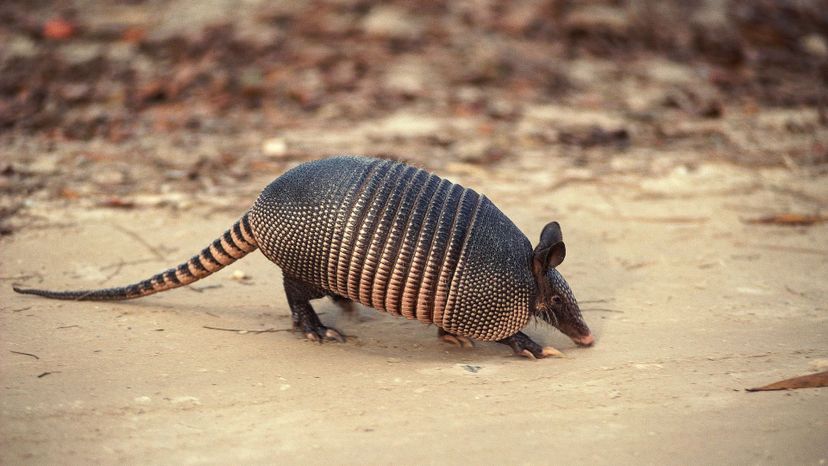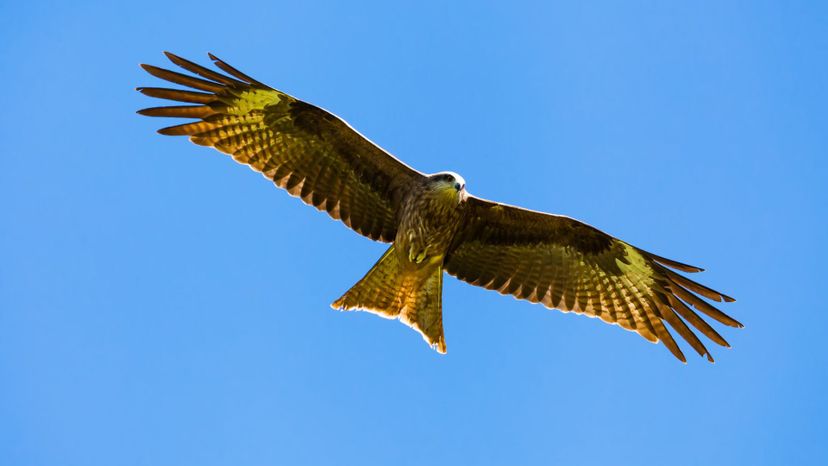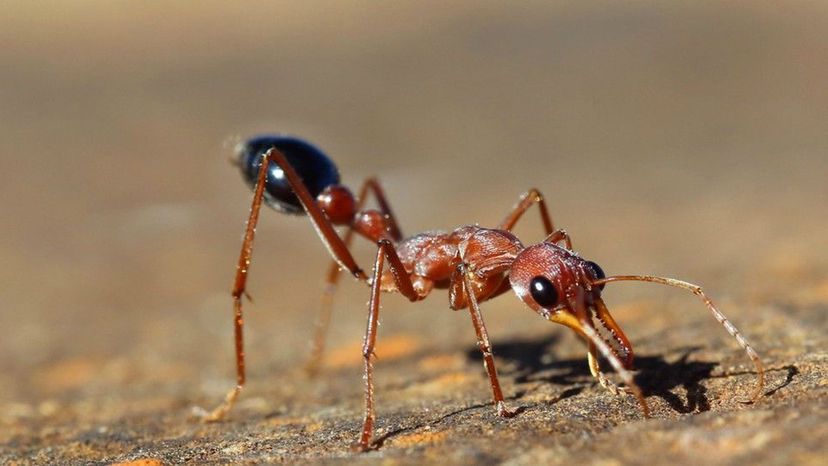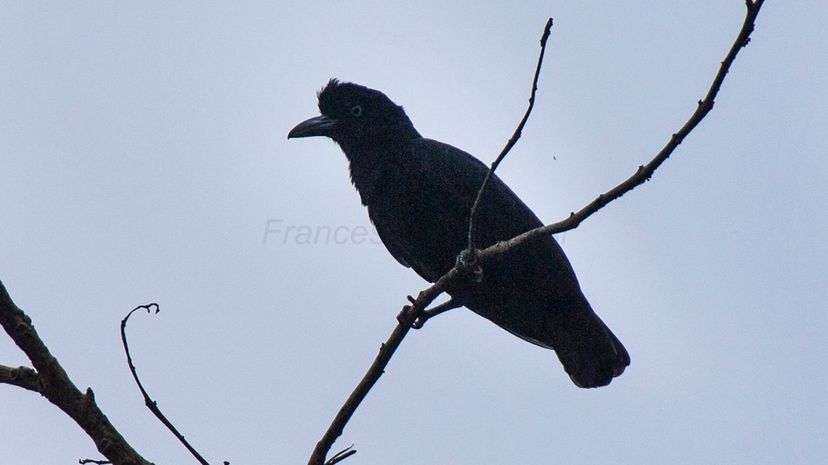
About This Quiz
A, E, I, O, U: those are the five vowels that make up the alphabet, which consists of 26 letters in total, the remaining letters being consonants. Do you know which animals were named by using the five vowels as a starter? This quiz will give you the chance to find out just that.Â
When thinking about animals that start with a specific letter, it might seem difficult to name only those that begin with a vowel. That's such a small fraction of the alphabet, after all. Luckily, there are millions of species of animals on the planet Earth, and no letter of the alphabet was spared when naming them.Â
Of course, that doesn't mean there aren't some difficult names on this quiz. Not many of these animals will be easy to identify. From rare reptiles to the many species of antelope, this quiz is filled with animals that you don't see on a daily basis.Â
Are you up for the challenge of identifying these animals whose names begin with a vowel? Here's your opportunity to see for yourself.
When you're ready to test your animal naming knowledge out, fire up this quiz and see if you're the animal expert that you claim you are!Â

Recognized by their flat faces, owls have heads that can turn 270 degrees in either direction. These birds of prey use that ability to spot potential food, which usually includes insects, rodents, and even other birds.

Electric eels carry the name of an eel, but they are not actually related to true eels. Evident by their name, electric eels can shock their prey with around 650 volts of electricity.

African buffaloes can be extremely aggressive and are not easy prey on the safari. With thick, protective skin and more power than an ox, these animals have been known to kill lions when attacked.
Advertisement

Several different primates fall under the classification of the ape family. Gorillas are most often associated with the family. However, humans are considered apes as well since we evolved from them.

There are two species of alligator, one located in America and the other in China. Reaching over 11 feet, the American alligator grows much larger than the Chinese alligator, which will grow to around five feet.

Anteaters come in a variety of sizes, but giant anteaters can grow up to seven feet long. Evident by their name, they use their long tongues to pick ants from ant beds as a source of food.
Advertisement

Armadillos build burrows where they spend as much as 16 hours a day sleeping. Despite having poor eyesight, they have a very good sense of smell, which they use to hunt a variety of insects.

Recognized by its white head, the bald eagle has been the national bird of the United States since 1782. Despite its national status, this animal almost went extinct due to hunting and pollution, but luckily, it has made a comeback after conservation efforts were put in place.

Weighing as much as 13,000 pounds, the African bush elephant is the largest mammal that lives on land. They have a lifespan that rivals the human population of many countries, living well into their 60s.
Advertisement

Ants may all seem the same, irritating bugs that love sugar, but there are thousands of species of ants crawling around. Groups of ants are led by queens, who are responsible for reproducing. Without a queen, the remaining ants die off quite quickly.

With a name that means "person of the forest," orangutans live up to that billing, hanging out in the forest of Sumatra and Borneo. Luckily, they have a seven foot arm span that helps them maneuver through the trees.

These cold-blooded reptiles prefer to live near the equator where temperatures are warmer. For people who purchase them as pets, heat lamps are often required to keep their body temperature up.
Advertisement

Male elk, known as bulls, have huge antlers that they lose around March each year. The antlers grow back starting in May, which prepares the animal for tussles with other elk during breeding season.

Made of concentrated melanin, an octopus has natural dye that it squirts out to defend against predators. This dye is so powerful that it will kill even the octopus if it doesn't escape the cloud.

Orcas are some of the most deadly predators in the open waters. With powerful jaws and long, pointed teeth, orcas feed on most other animals in the ocean including fish, seals, and whales.
Advertisement

Over thousands of years, Akitas have developed webbed feet which help them with maneuvering in the snowy mountains of Japan. These dogs originate from the island nation, where they were traditionally used for hunting.

Reaching heights of nine feet, the ostrich has the title of being the world's largest bird. Though they can't fly, they are extremely fast on land with long legs that can cover five meters in a single stride.

With rabbit ears and a pig nose, aardvarks live throughout sub-Saharan Africa, where they feed on insects like ants and termites. Their name is derived from an Afrikaans word meaning "earth pig."
Advertisement

Living up to 10 years in the wild, ocelots can be primarily found throughout northern South America where they feed on fish and small animals. They are not apex predators, however, and will find themselves in the stomach of animals like anacondas and jaguars.

Found all throughout the world, except for Australia and Antartica, otters live near water sources. Most otters prefer freshwater, but the sea otter has adapted to live along the Pacific Ocean.

Living together in herds, alpacas are domesticated animals that are raised mainly for their wool. These docile animals were domesticated in the Andes Mountains around 6,000 years ago.
Advertisement

Opossums are the only marsupials found throughout the United States and Canada. Marsupials are mammals that prematurely birth their young then finish nursing those children in pouches.

Anacondas typically hang out near or around a source of water where they wait for unwary prey. They often submerge most of their body with only their eyes and nostrils peaking above the water level.

Oysters are extremely nutritious as they provide a good supply of copper, iron, magnesium, zinc and several vitamins. That's one of the biggest reasons oysters have become such a popular food all around the world.
Advertisement

Emus live in the forest of Australia where they grow to heights of six feet. These large birds can't fly, but they do have excellent leaping abilities, jumping as high as seven feet off the ground.

Female anglerfish have a unique piece of dorsal spine above their mouths that attracts prey toward them. These fish have a large enough mouth that they can consume food twice their size.

Located in the savanna of eastern and southern Africa, impalas prefer to live in large herds that provide protection. These herbivores munch on everything from grasses to bushes to shrubs.
Advertisement

Earwigs are identified by the pincers located on their abdomen and their thin wings, which are rarely used. These nocturnal creatures spend their nights hunting for plants and other insects.

Umbrellabirds live throughout the rainforest of South America. They are well-adapted to any rainy weather that may develop because they have feathers on their head that protect them from the weather.

Traditionally, oxen have been used for a variety of tasks from transporting goods to plowing the land. Most male oxen are usually castrated to calm them down so they are easier to domesticate.
Advertisement

Agamas live together in groups where a dominant male usually serves as the head. The dominant male can be identified by its colorful displays, where it will change colors to show off to females and other males.

Eland are very adaptable animals that live in a variety of environments across Africa. They have the ability to raise their body temperature, which allows them to conserve water when the days get hot.

A New World monkey, uakaris are social animals that live throughout the Amazon River basin in groups that are referred to as troops. These troops can consist of upward of one hundred uakaris.
Advertisement

Located throughout the rainforest of Africa, okapis are territorial animals that prefer to be left alone. They spread a tar through sweat glands on their feet to alert other animals of their territory.

Oryx will live together in a herd for protection from various predators across Africa. These herds can reach into the hundreds, with individual oryx living up to 20 years in the wild.

Living in caves, these strange salamanders are almost completely blind, instead relying on other heightened senses to hunt for food. One of the olm's most unique gifts is the ability to detect electricity.
Advertisement

Standing well over two feet tall, you won't find a larger lemur than the indri. Coming in a range of colors from black to brown, an indri's coat is affected by the region they live in.

Only reaching about 10 pounds in weight, Affenpinschers are small but very brave dogs. They are typically harder to train than most dogs, but it's more out of stubbornness than ignorance.

Addax are extremely adaptable due to living in the rough conditions of the Sahara, a desert in Northern Africa. For example, their coats will change colors according to the season, turning white in the summer heat.
Advertisement

Edible frogs are located all across Europe, where they like to spend their time near calm water. In France, these little creatures have become a popular food, especially their delicious legs.